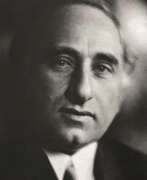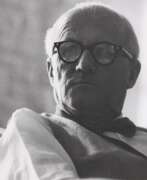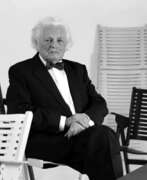Architects Functionalism


Erik Gunnar Asplund was a Swedish architect, mostly known as a key representative of Nordic Classicism of the 1920s, and during the last decade of his life as a major proponent of the modernist style which made its breakthrough in Sweden at the Stockholm International Exhibition (1930). Asplund was professor of architecture at the Royal Institute of Technology from 1931. His appointment was marked by a lecture, later published under the title "Our architectonic concept of space." The Woodland Crematorium at Stockholm South Cemetery (1935-1940) is considered his finest work and one of the masterpieces of modern architecture.


Michel Boyer was one of the last great interior designers who remained true to the principles of modernity.
Boyer collaborated with Dior, Lanvin, Balmain and designed interiors for hotels, embassies and numerous corporate headquarters. His private clients have included Elie de Rothschild, Liliane Betancourt and Karim Aga Khan.


Charles Ormond Eames Jr. was an American designer, architect and filmmaker. In professional partnership with his spouse Ray Kaiser Eames, he was responsible for groundbreaking contributions in the field of architecture, furniture design, industrial design, manufacturing and the photographic arts.


Ray-Bernice Alexandra Eames was an American artist and designer who worked in a variety of media.
In creative partnership with her husband Charles Eames and The Eames Office, she was responsible for groundbreaking contributions in the fields of architecture, graphic design, textile design, film, and furniture. The Eames Office is most famous for its furniture, which is still being made today. Together, the Eameses are considered one of the most influential creative forces of the twentieth century.
During her lifetime, Ray Kaiser Eames was given notably less credit than she has been given posthumously in art and design literature, museum shows, and documentaries.


Walter Adolph Georg Gropius was a German-American architect, recognized as one of the founding masters of modern architecture and the pioneer behind the Bauhaus School. Born in Berlin, Gropius was immersed in an environment that nurtured his architectural interests from an early age, thanks to his well-connected family and architect great-uncle, Martin Gropius. His education took him from Munich to Berlin, where he honed his architectural vision, eventually joining the office of Peter Behrens, where he worked alongside future luminaries such as Ludwig Mies van der Rohe and Le Corbusier.
Gropius's early career saw him co-found an architectural practice with Adolf Meyer, with whom he created the Fagus Factory, a landmark in modern industrial architecture that emphasized the form follows function principle and showcased modernist design through its glass curtain walls. This period was marked by his contributions to the Deutscher Werkbund, advocating for the fusion of art with industrial design, and his leadership at the Bauhaus School, where he fostered an interdisciplinary approach to art and design education.
His relocation to the United States led to significant projects, such as the Harvard Graduate Center and the Josephine M. Hagerty House, marking his influence on American architecture and the broader acceptance of International Modernism. Gropius's legacy is not only in his buildings but also in his philosophy of integrating art, design, and architecture, a vision that continues to inspire architects worldwide.
For those interested in exploring the works and impact of Walter Gropius further, visiting exhibitions at museums or galleries that feature his work and the Bauhaus movement can offer deeper insights. Collectors and experts in art and antiques might find his approach to design and architecture particularly enlightening, given its enduring influence on modern and contemporary art.
If you're captivated by the innovation and ideas of Walter Gropius and wish to stay informed about sales, auctions, or exhibitions related to his work, consider signing up for updates. This subscription will ensure you're always in the know about events and opportunities related to this pioneering figure in modern architecture.


Kerstin Hörlin-Holmquist was a Swedish modernist architect and designer known for her contribution to the furniture field. Her designs were often characterised by clean lines, organic forms and an emphasis on comfort and functionality.
Kerstin Hörlin-Holmqvist also created textiles, ceramics and glasswork, often collaborating with renowned Swedish manufacturers. Her work has been exhibited internationally and critically acclaimed for its innovative approach and timeless appeal.
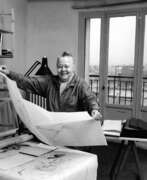

Charlotte Perriand was a French architect and designer. Her work aimed to create functional living spaces in the belief that better design helps in creating a better society. In her article "L'Art de Vivre" from 1981 she states "The extension of the art of dwelling is the art of living — living in harmony with man's deepest drives and with his adopted or fabricated environment." Charlotte liked to take her time in a space before starting the design process.
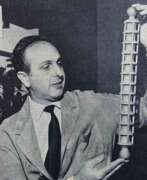

Vittoriano Viganò was an Italian architect and designer based in Milan. He graduated from the Polytechnic University of Milan in 1944, and had there a long career as a Professor in Interior Architecture and Urban Planning. He also worked as an Art Director of Arteluce for several years. Viganò always kept his eyes open to new emerging currents, and became known as a skilful interpreter of rationalist and brutalist architecture.


Arne Vodder was a Danish architect and furniture designer. He received his art education at the Academy of Fine Arts in Copenhagen.
Arne Vodder began a very fruitful collaboration with the designer George Tanier. In this collaboration, Vodder developed some of his best designs in the late 1950s and early 1960s.
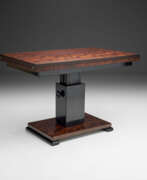

Otto Leonard Wretling (Swedish: Otto Leonard Wretling) is a Swedish visual artist, architect, designer and furniture manufacturer.
In 1928, the carpentry company Otto Wretling was chosen as the Royal Court Furniture Supplier by King Gustav V.




